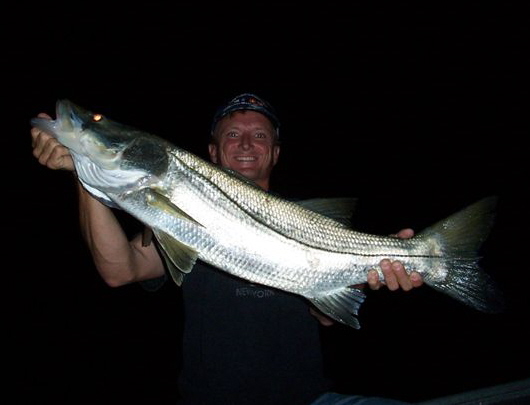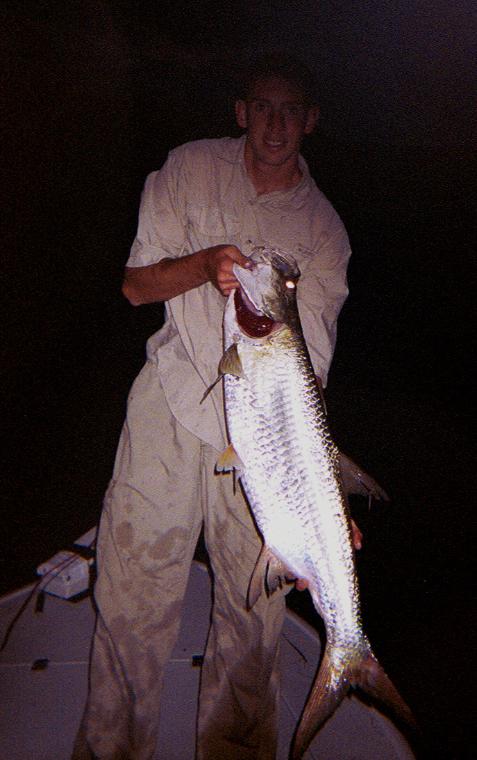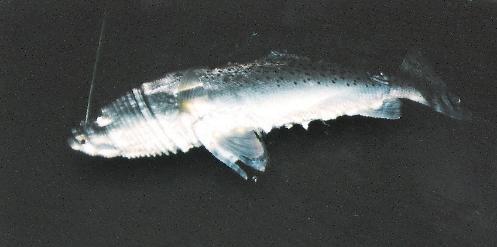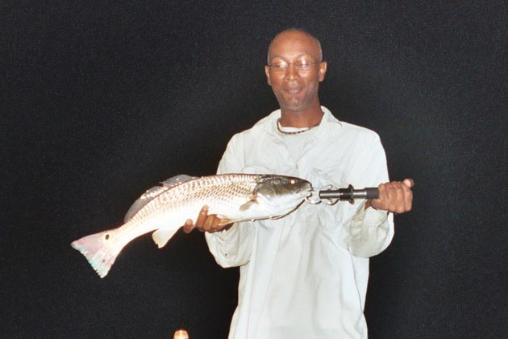in terms of numbers of fish, and often size of fish
as well. This is especially true during the hottest
months in summer and early fall; however, during
winter and early spring, night fishing is often very
productive. Trips can be tailored to maximize
either quantity or size, with the understanding
that trips aimed at big fish sometimes result in
fewer strikes overall. The big ones didn’t get
that big being easy to catch. Night trips are
certainly the trip to take if you are looking for
the most relaxing fishing experience on the
water. With the exception of foul weather nights,
they are the most peaceful trips by far. The
daytime boaters and fishermen with their noise
and occasional interference are gone. The
atmosphere is quiet and tranquil, but the fishing
is often fast and intense, a thoroughly pleasant
dichotomy.

snook, and can be especially productive for the
fly angler. A night snook trip is highly
recommended to any angler looking to catch his
first snook on fly. Beginning fly anglers will find
the shots plentiful and the casting relatively
easy. Much of the trip involves casting to visible
fish, not sight fishing in the traditional sense, but
the excitement of casting at visible fish and
watching the strike is still there! Big snook often
feed more consistently at night and there are
locations that are always occupied by double
digit fish. The fish are always there, it is just a
matter of their inclination to feed any given night.
Snook are cagey, eccentric fish, and their
behavior can vary from spot to spot. You’ll often
find that fish in one spot may hit one lure, fly, or
bait while fish in another spot only a short
distance away may be more inclined toward
another variety. For this reason, I keep several
lures and fly patterns on hand, some well known
and a couple I’ve developed myself over time and
testing. Some locations consistently hold
snook in good or even exceptional numbers while
others that look just as good to the average eye,
don’t hold fish at all. I have spent many nights
finding the best spots and figuring out the tricks
to each one. I spend time checking out new or
seasonal spots, as well, on numerous trips with
friends and family. The more options we have,
the more likely we are to hit spots that hold
aggressive fish any given night.


tarpon as well, in season. These trips usually
involve live bait fishing and depend greatly on
moon and tide phase. If the fish are particularly
cooperative, I'll try them on with flies or lures as
well. For some, the thrill of catching a tarpon is
only heightened by the darkness, since each jump
is heard more than seen. I’ll accept night time
tarpon trips when I believe the fish will feed, but I
try to avoid tarpon trips on nights they are less
likely to cooperate, for obvious reasons.

bag. These trips usually result in snook and
seatrout, with one or more among redfish,
ladyfish, snapper, flounder, sheepshead, and
grouper making a showing. Seatrout and ladyfish
are often at their most aggressive after dark,
much like snook, and it shows on many nights.
They will feed with reckless abandon in the right
conditions. Any technique can work, though live
bait is generally the best bet for sheer numbers
of strikes.